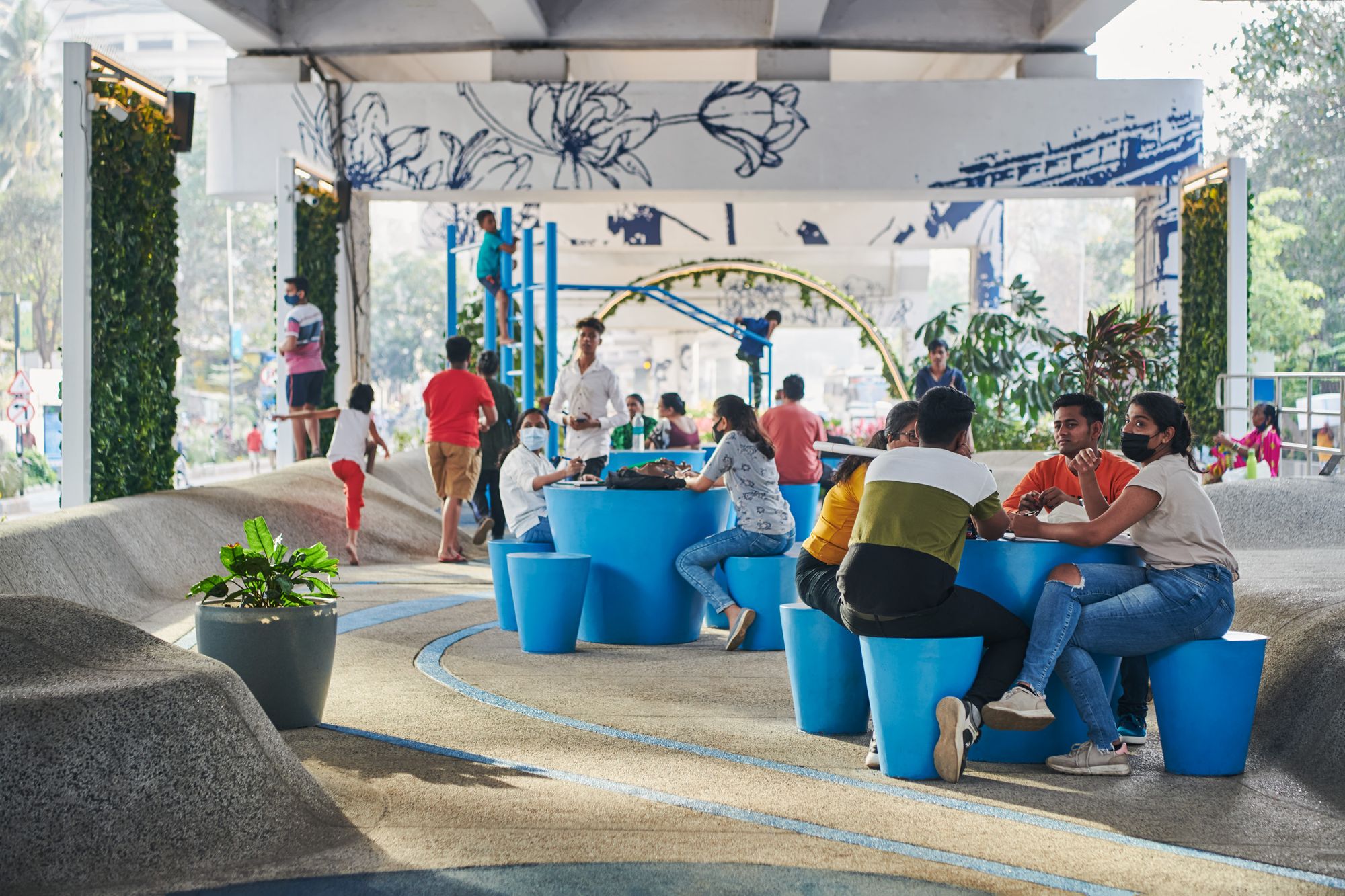In The Heart Of Mumbai Is A Street Redefining Urban Design and Public Infrastructure
Designed to be more than a street project, One Green Mile is a movement towards reclaiming public spaces and creating safe and vibrant neighbourhoods in Mumbai. With its wide footpaths, cycle tracks, and interactive avenues, this project is a model for a complete street in the truest sense.

“Good streets make good cities.” — StudioPOD
FACT FILE
PROBLEM WITH OUR STREETS
As you walk down the streets of Mumbai, it’s easy to feel a sense of apprehension. Cars and motorbikes whizz by at breakneck speeds and the footpaths are littered with obstacles that make walking a challenge. It's an experience that every Mumbaikar can relate to.
The city's urban design has been criticised for lacking walkability, legibility, and safe spaces for its residents. But the architects at Studio Pod took up the challenge to design a model street that addresses these concerns.
PHILOSOPHY OF THE SOLUTION
Located in the bustling area of Parel, the One Green Mile project started as a small street frontage project for the Nucleus Corporate Group. But it quickly grew into a massive streetscape redesign that would benefit all of Mumbai. The project focused on two key elements: redesigning the streets and the under-the-flyover park.
The design philosophy of the One Green Mile project was to reclaim public space and give it back to the Mumbaikars. To achieve this, the team widened footpaths, created safe road crossings, and developed a vibrant park under the flyover. They envisioned a street design that saw everyone as human and didn't discriminate based on caste, class, or gender.
The architects, Mahesh Waghdhare, Mansi Sahu, and Sarfaraz Momin, believed that every citizen deserved a safe and welcoming environment to walk through.
WHEN WALKING THROUGH
The street design features wide and continuous footpaths, ensuring that pedestrian mobility takes up priority. The project also includes the redirection of traffic to make vehicular mobility smoother, the introduction of cycle tracks to encourage alternative modes of commute, and the use of legible signages to create a complete street experience.
One of the significant aspects of One Green Mile's design is creating safe spaces for all users, regardless of their gender, class, or caste. To ensure every user’s safety, the mile has been designed using strategies such as open planning, interactive avenues, and planning for critical uses.
Additionally, the design integrates several pause points throughout the streetscape. These pause points comprise durable seating areas where the city can sit, relax and unwind, providing them with a break from the chaos. They also offer a place for people to hang out or take their lunch breaks.
THE PARK UNDER THE FLYOVER
Another undertaking of the One Green Mile project was the transformation of a neglected public space into a vibrant park.
The Parel Baug is an under-the-flyover park that has become a benchmark for revitalising unused areas in Mumbai. The park features a Vachnalay, which is a Marathi term for a library, that serves as a study space for kids. To create a unique visual identity for the project, the architects collaborated with St+Art India to curate beautiful murals that showcase the history and heritage of the area. These are a homage to Dadar’s flower market, the Parel tree, and the textile mills of Mumbai.
IN CONCLUSION
Based on a design philosophy of inclusivity and safety, treating every pedestrian as a human, regardless of caste, class, or gender; the architects have delivered not just a street, but a vibrant neighbourhood where people can walk without fear, interact with their surroundings, and enjoy the greenery surrounding them. The architects have paid close attention to every detail, from the smooth surfaces of the footpaths to the placement of benches and streetlights. One Green Mile is a street and also a statement about the kind of city its people want to live in. One that is inclusive, safe, and sustainable.
A cosmopolitan city cannot be considered a good city unless its streets are safe for everyone, particularly those without access to a car. One Green Mile aims to stand as an exemplary solution that can be easily replicated throughout Mumbai to transform it for the better.
